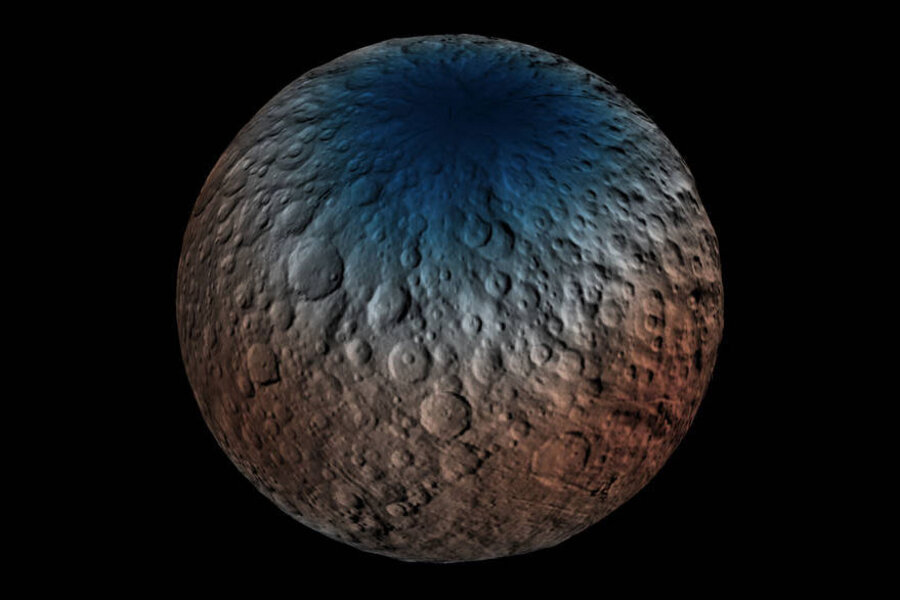Spectacular Ceres images deepen mystery of dwarf planet's geology
Loading...
Scientists with NASA's Dawn mission released closeup photos of Ceres on Tuesday at the Lunar and Planetary Science Conference in Texas.
Low-orbit images of the dwarf planet located in the asteroid belt between Mars and Jupiter were highly anticipated because of what they could potentially say about the Occator Crater. Bright spots on Ceres have perplexed scientists since NASA’s Dawn mission sent images of them back last year. And measuring 57 miles across and 2.5 miles deep, Occator Crater holds the brightest area on the entire planet.
The new images taken 240 miles from Ceres’ surface – Dawn’s lowest-altitude orbit – did not disappoint. An enhanced color map of Ceres reveals a geologically complex surface.
“Although impact processes dominate the surface geology on Ceres, we have identified specific color variations on the surface indicating material alterations that are due to a complex interaction of the impact process and the subsurface composition,” Ralf Jaumann, of the German Aerospace Center in Berlin, says in a NASA blog post. “Additionally, this gives evidence for a subsurface layer enriched in ice and volatiles.”
Surprisingly, big impact basins – such as ones like Occator Crater – are actually rather rare on the dwarf planet. This is surprising because based on the solar system’s collision history, craters as big as Occator should be dispersed over Ceres' surface.
“We must think that those craters formed, and then they got erased,” Simone Marchi of the Southwest Research Institute told National Geographic. “The question is, How can you erase all those large craters?”
And Occator itself is proving to be unique. The latest images show a dome in a pit within the crater’s bright center, surrounded by fractures.
“The intricate geometry of the crater interior suggests geologic activity in the recent past, but we will need to complete detailed geologic mapping of the crater in order to test hypotheses for its formation,” explains Jaumann in NASA’s press release.
Along with “highlighting the diversity of surface materials and their relationships to surface morphology,” Dawn’s lowest-altitude orbit also collected more detailed data on Ceres’ neutron count and Oxo Crater, a young feature on Ceres where water has been detected.
“Before Dawn began its intensive observations of Ceres last year, Occator Crater looked to be one large bright area,” says Dr. Jaumann. “Now, with the latest close views, we can see complex features that provide new mysteries to investigate.”
The latest images prove that Occator continues to elude scientists, and the lack of other big craters add to Ceres's mystery.








